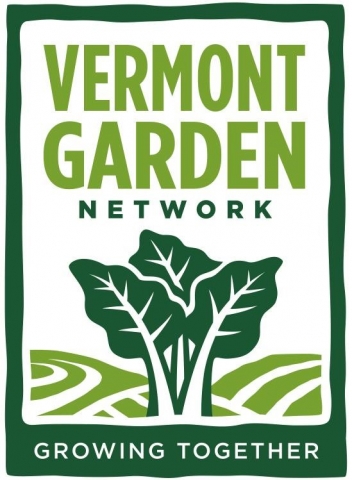Memorial Day weekend is a huge gardening time for Vermonters. We’re no exception.
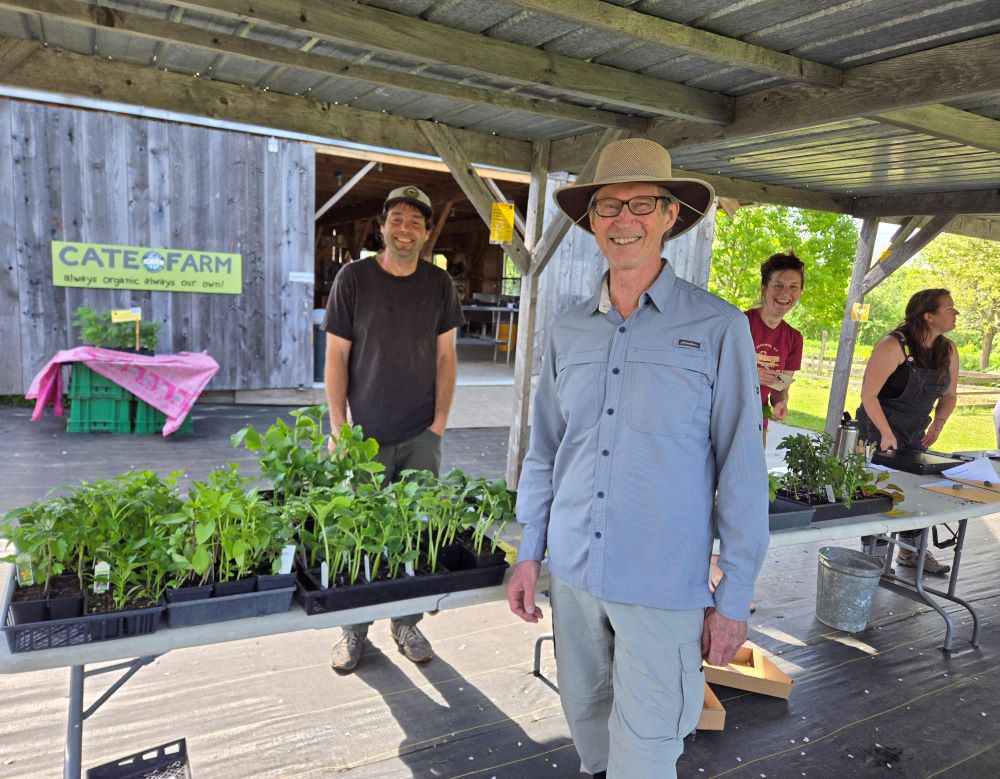
The weekend began on Friday at Cate Farm, where these great folks grew the garden’s seedlings for basil (Italian, cinnamon, lemon, and Thai), Sungold cherry tomatoes, chili peppers (poblanos and shishitos), cucumbers (Marketmore and lemon), dill, eggplants, and Italian parsley. We even met two prospective new gardeners who stopped by.
With nighttime temperatures dipping into the forties and a cool, wet week in the forecast, it’s too early to plant these babies. Instead, we’re gradually hardening them off, leaving them outside during day and on nights when the temperature is above fifty degrees. We may head back to Cate Farm; it turns out we need tomatillo and thyme seedlings too. Go ahead: Twist our arms!
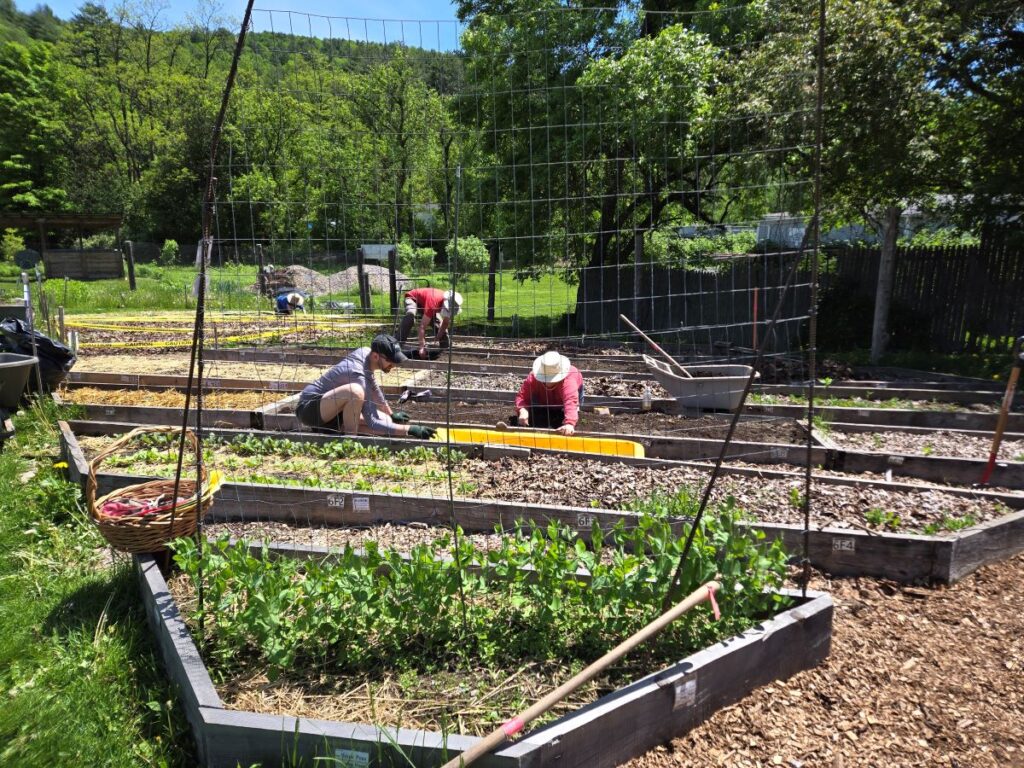
Gardeners dug in on a gorgeous Saturday. The day’s seed planting included carrots, chard, collard greens, kale, lettuces, turnips, mesclun mix, and spinach and watered it all in. Team Flower Power planted dahlia and gladiola bulbs. Nothing to see here—yet!

Gardeners planted one of our favorite lettuces: Black Seeded Simpson, like this treasure trove from Botanical Interests. We harvest lettuces and other greens so they feed as many gardeners as possible and continue producing as long as possible. We harvest outer leaves, retaining a core of six to eight healthy center leaves. This way, plants keep growing and growing. Once they start to bolt, we pull up the whole plant, take it home to eat, and replant. We’re a ways off from that yet.
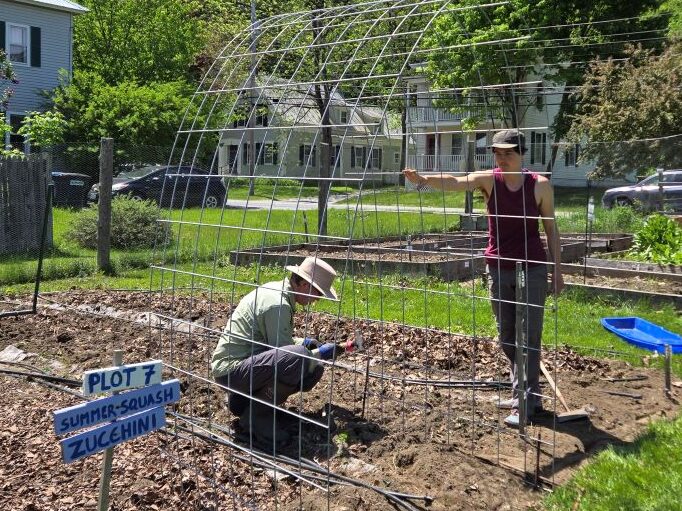
A friend of the garden donated funds for these cattle panels, which gardeners bend into hoops and stake into the ground. In this bed, pole beans will climb the hoops. Beans get planted a little later here, in early June.
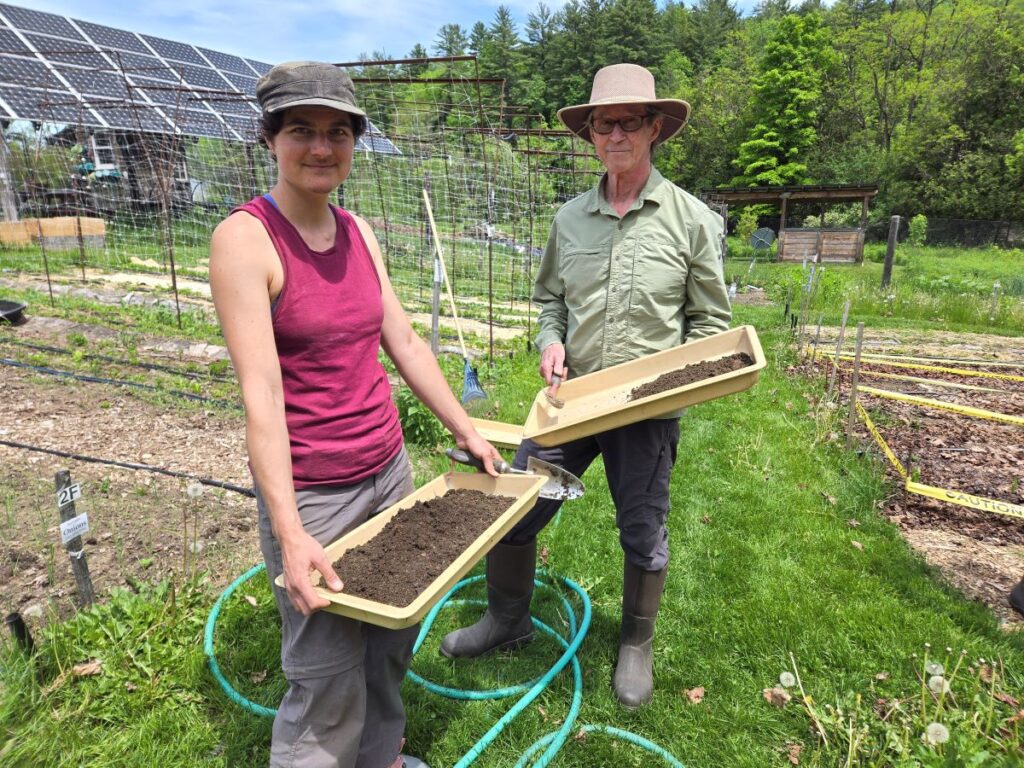
After four years, it’s time to test the soil again. Gardeners took samples from three beds to send off to the lab. We’ll find out what nutrients the soil needs and what it has too much of.
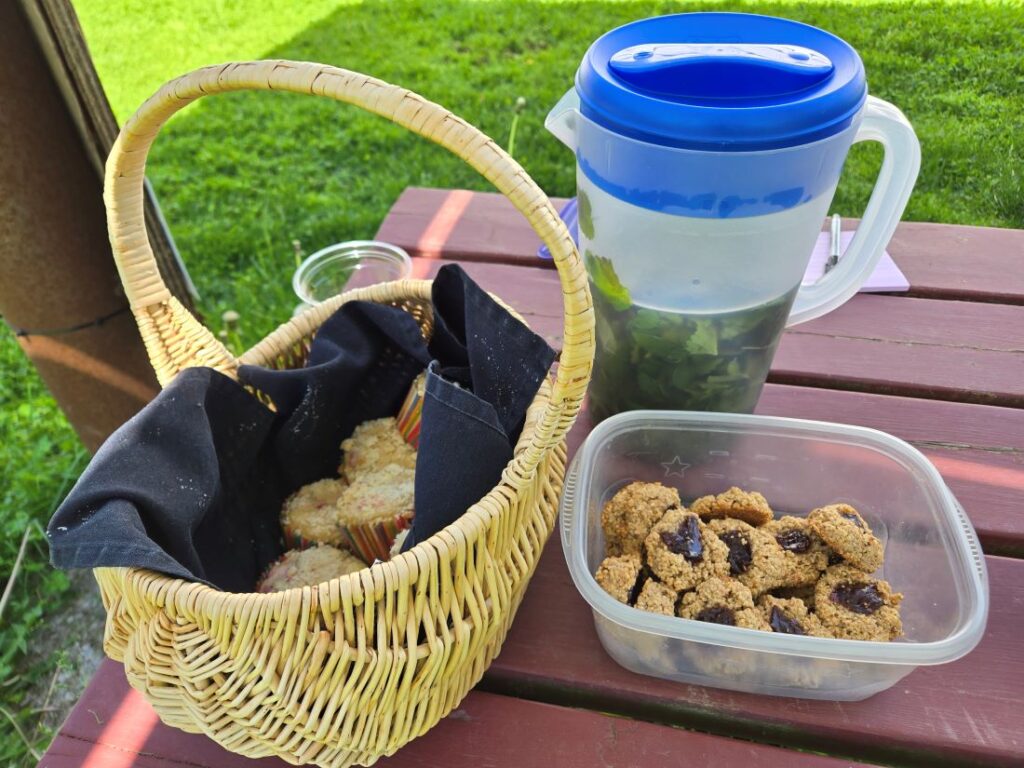
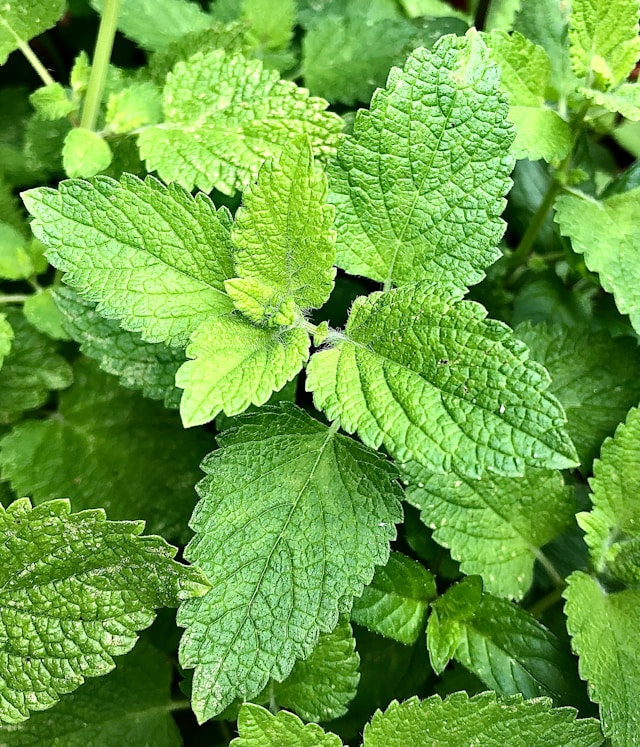
Delicious treats refreshed gardeners: Vegan rhubarb muffins (flavorful and not too sweet—just right), vegan, gluten-free thumbprint cookies (basic, nutritious ingredients with big flavor and satisfying texture), and water infused with garden mint and lemon balm.
Herb-infused garden tea: After harvesting the herbs, a gardener rinsed them, macerated them (rubbed them hard between clean hands), and put them in the bottom of the pitcher. She used a wooden kitchen mallet to mush the herbs further, bringing out the flavor, poured water over them, and left the infusion in the fridge for a couple of days. Simple and delicious!
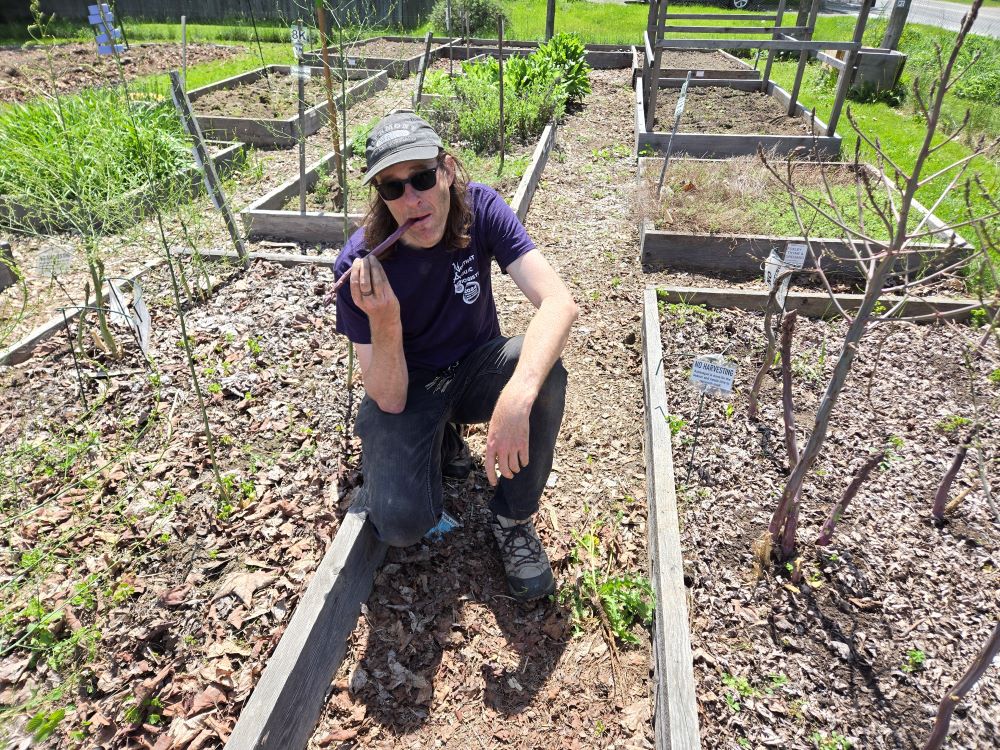
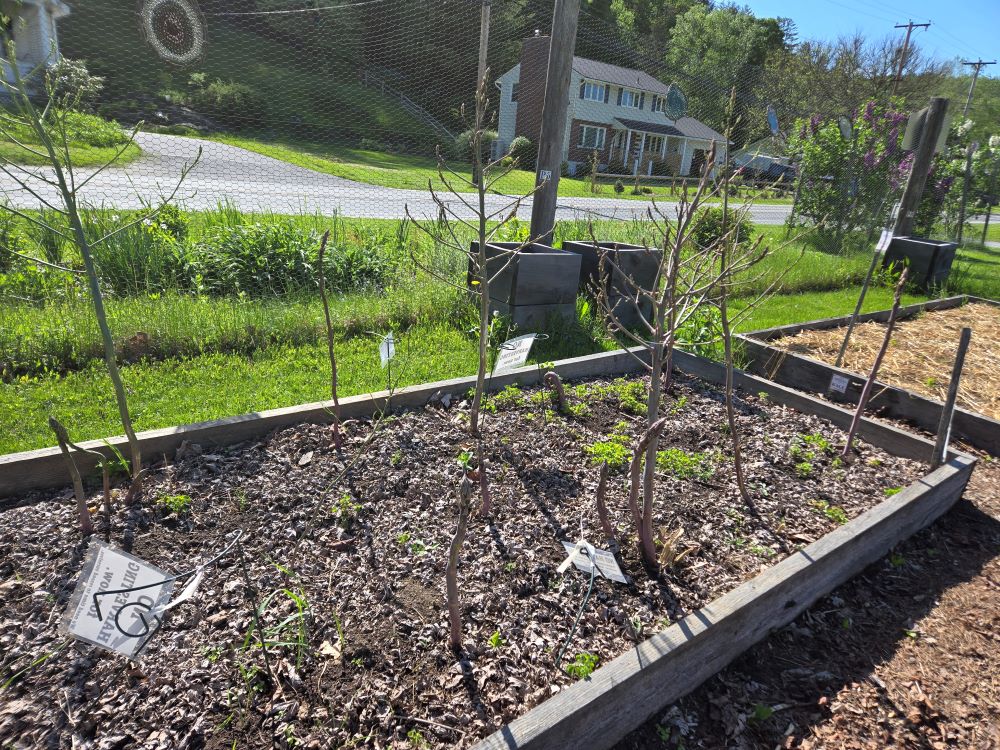
Asparagus is another nosh for this time of year. Gardeners established these these beds of green and purple asparagus in 2022. They’re still relatively new and produce modestly. Harvesting instructions: When gardeners see an asparagus plant with more than one stalk growing, identify one as big around as their index finger and snap it off near the ground. Cooked asparagus is delicious, of course, but these tender stalks right out of the ground are irresistible.
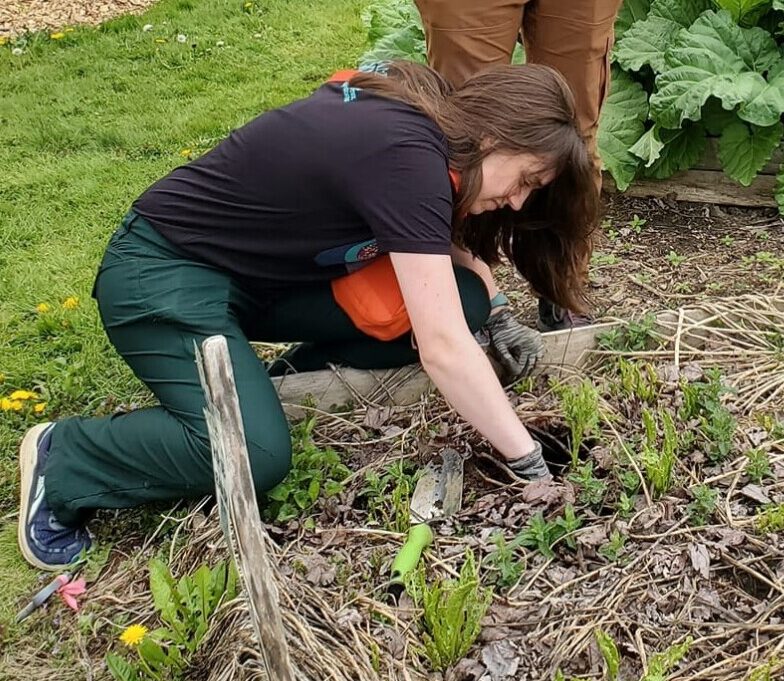
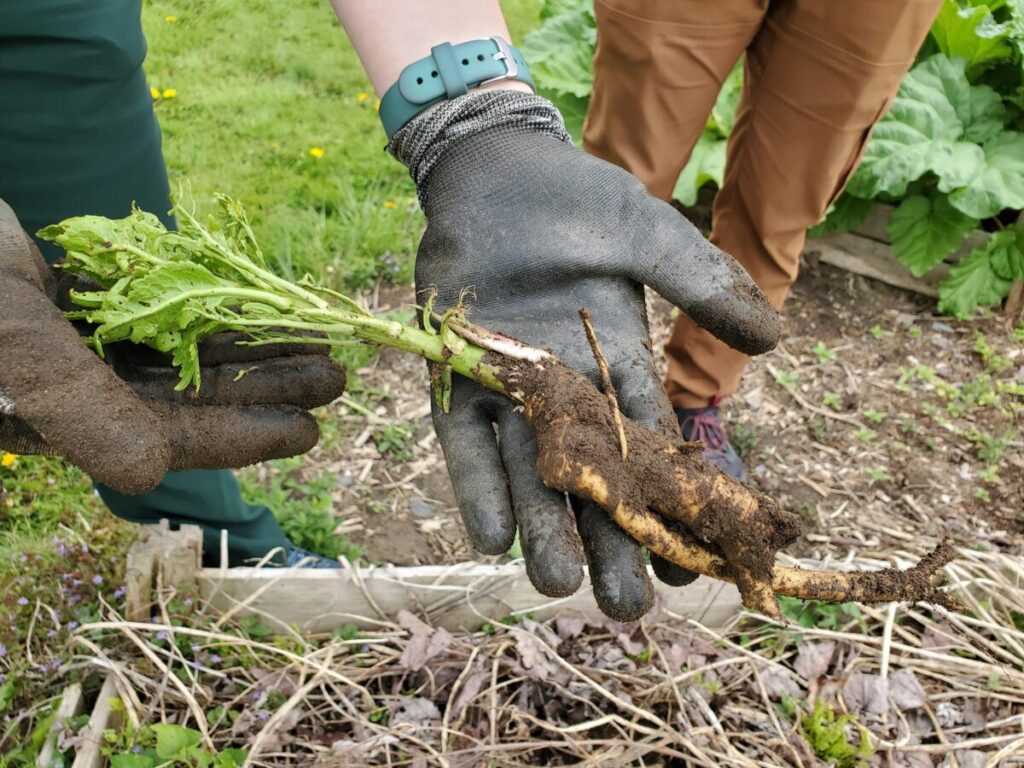
There’s still horseradish too! How to harvest: Find something green, dig up the root at that area, and harvest a small amount that will probably be more than you can use.
Gardeners could harvest horseradish all season this way. Typically, one would harvest horseradish in the fall, when it’s as big as it’s going to get and the tops have died back. At that point, it’s an intense flavor blast. Or it gets harvested in the spring, before it gets majorly growing again.
The idea is not to damage the crop while it’s still growing, but the garden has so much of it. This allows gardeners can harvest a bit anytime to enjoy making delicious dishes—perhaps with many other garden crops—throughout the season.


“How do you keep track of all those plants?” Behold, the garden plan. Since plans are always changing, it’s a draft plan until the garden is put to bed for the season and we review what was, fond memories to sustain us until the next season and inform our plans for it.

